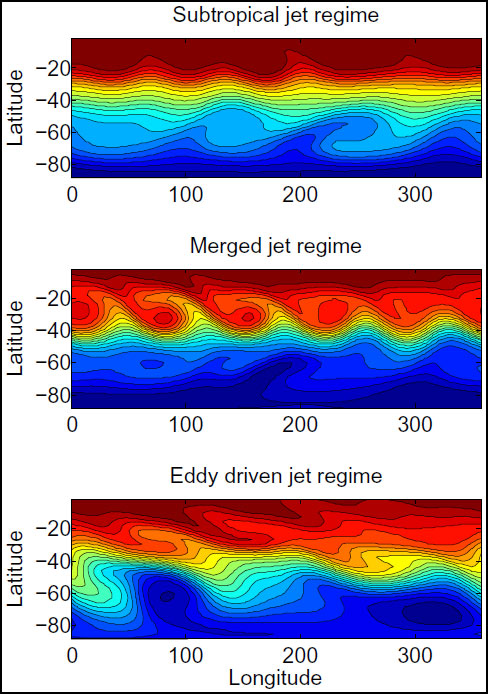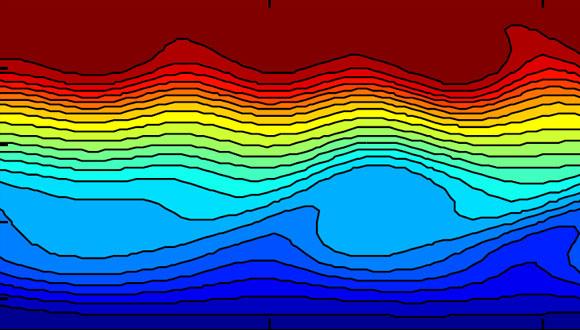Flow regimes of the upper tropospheric jet stream
Researcher: Orli Lachmy
Researcher: Orli Lachmy
An ongoing research in Dr Nili Harnik's group deals with the typical flow regimes of the upper tropospheric jet stream – a "river" of wind flowing from west to east a few kilometers above the ground. The jet latitude and structure change from one regime to the other, due to the different dynamical processes maintaining it. The mean state of the jet is a result of a competition between two main processes: one is advection of planetary angular momentum by the mean circulation, which creates a subtropical jet. The other is transfer of momentum by waves (also called "eddies", defined as deviations form the zonal mean), which creates a jet in the midlatitudes called an "eddy driven jet". The two types of jets may exist at the same time and may also merge to form one "merged jet".
Together with Orli Lachmy, a graduate student in the group, they managed to reproduce the different flow regimes in an idealized numerical model, which they wrote in order to analyze the maintenance of the jet in each regime. The figure shows snapshots of the potential vorticity field for each of the regimes: subtropical jet regime, merged jet regime and eddy driven jet regime. The waves' spectrum and intensity are different in each regime. It was found that a subtropical jet regime exists when the waves are weak and interact with the flow mainly at higher latitudes, far from the jet. The merged jet regime is maintained by a positive feedback with a wave of zonal wavenumer 5, when the eddy kinetic energy is intermediate. The eddy driven jet exists when the eddy kinetic energy is strong and nonlinear interactions between different wavenumbers becomes important.



